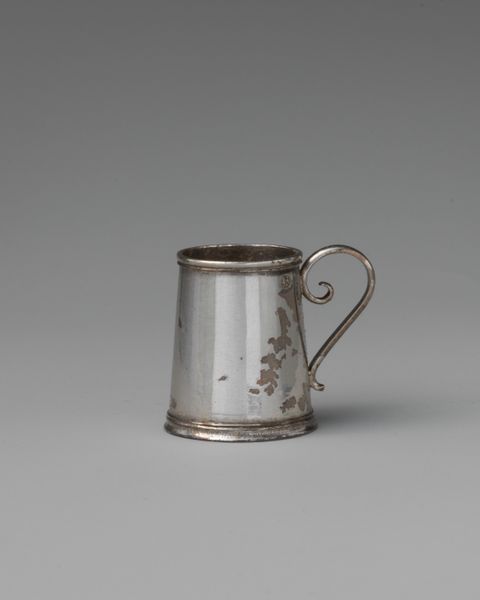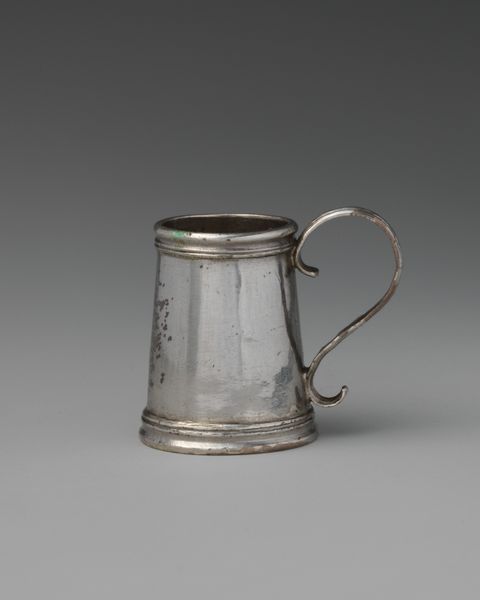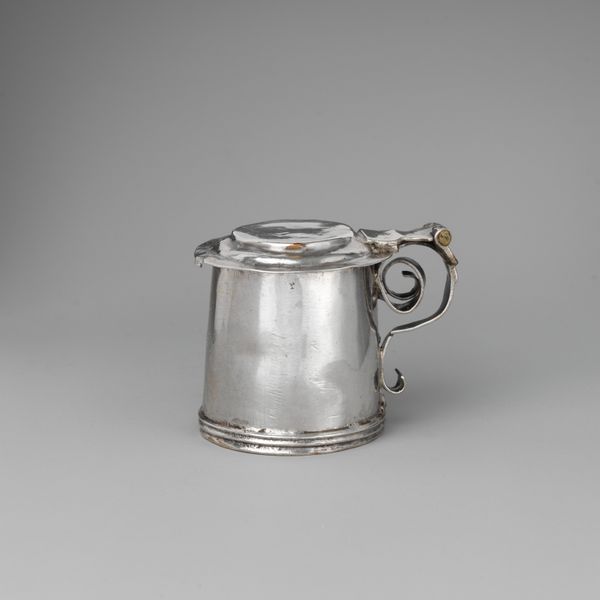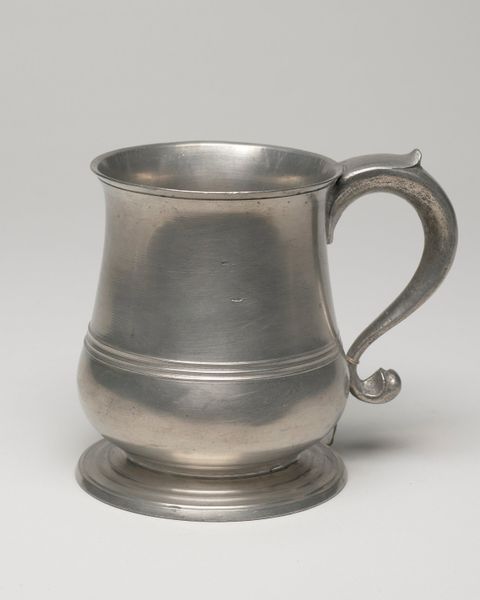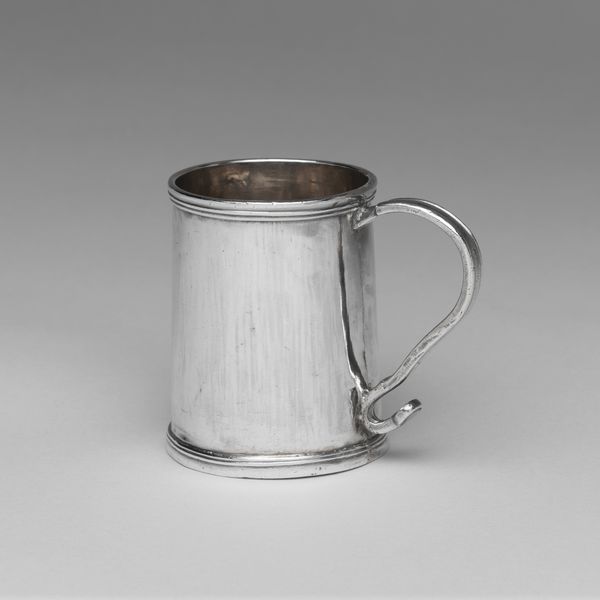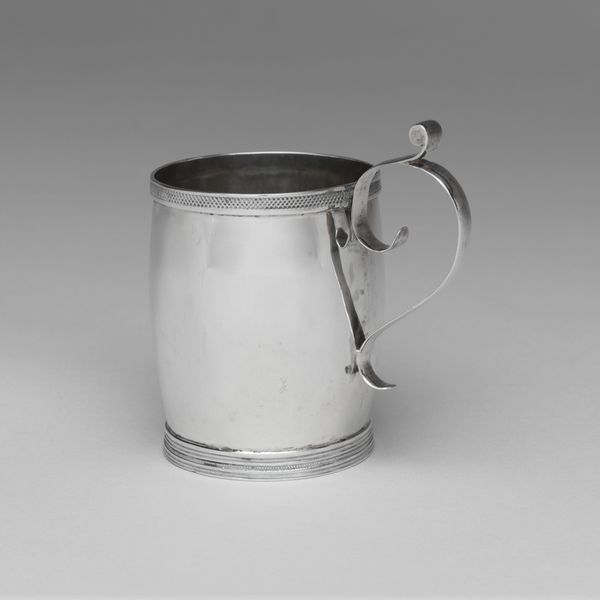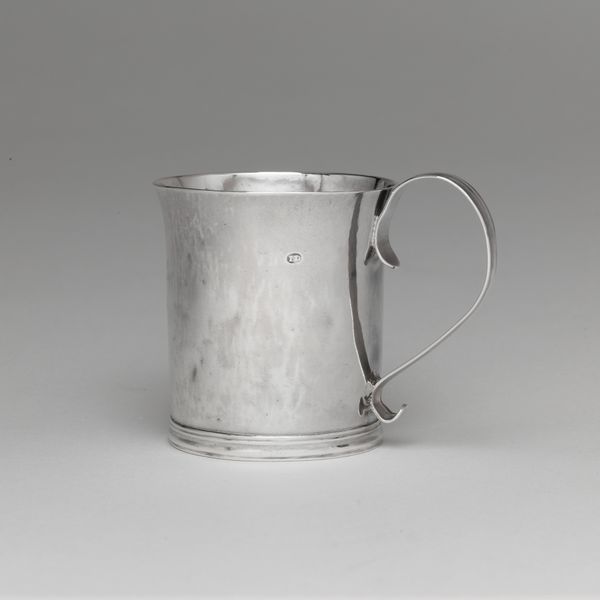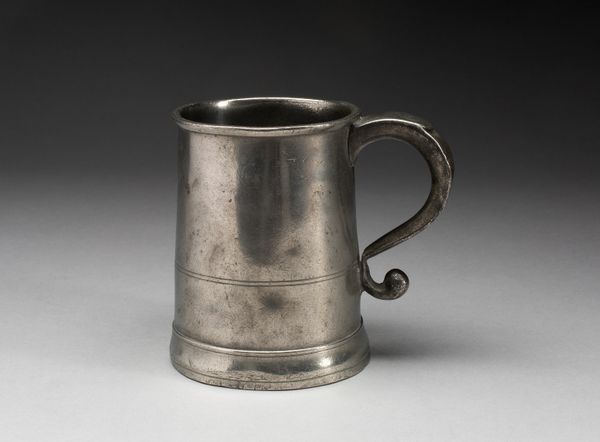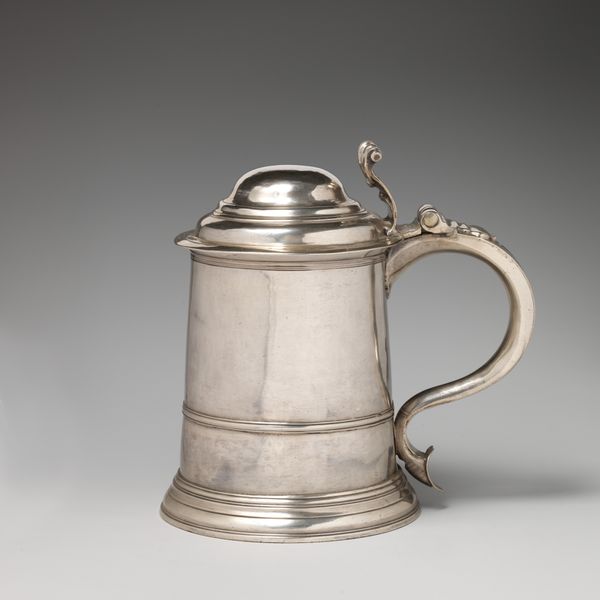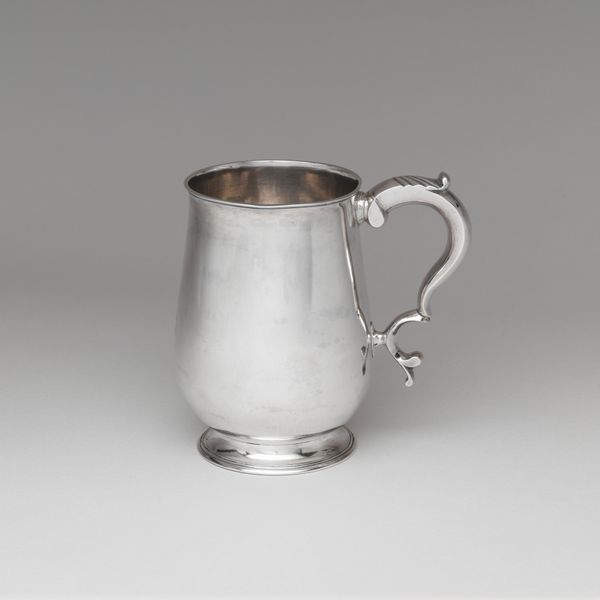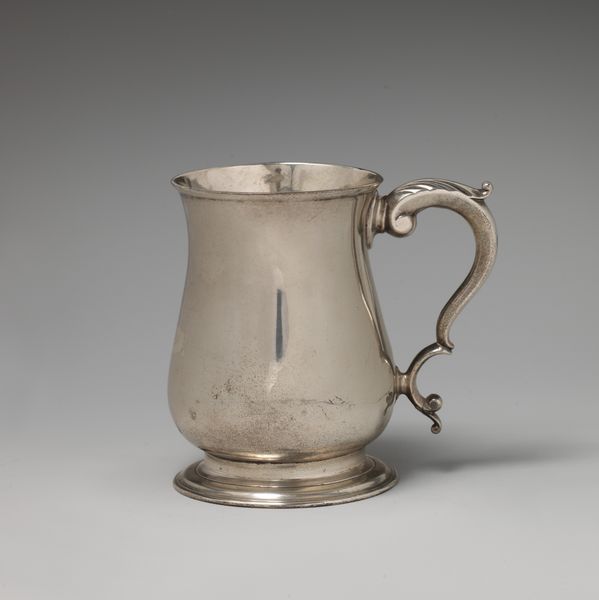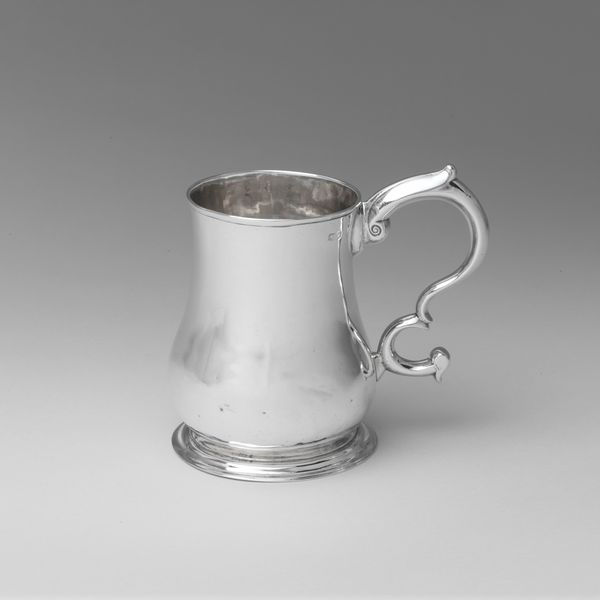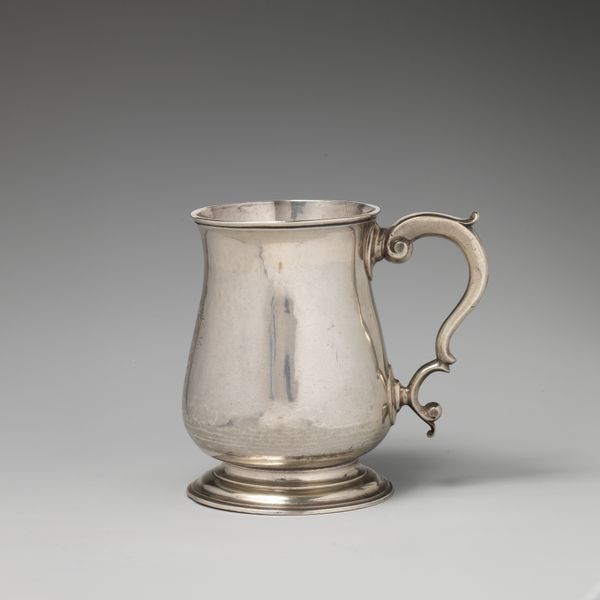
silver, sculpture
#
silver
#
baroque
#
sculpture
#
decorative-art
Dimensions: Overall: 1 3/8 × 1 1/8 in. (3.5 × 2.9 cm)
Copyright: Public Domain
Editor: This petite silver mug, dating from around 1715 to 1735, strikes me with its simplicity and surprising heft given its miniature scale. What strikes you as you examine it? Curator: The first thing I notice is the raw materiality. Silver, even when meticulously shaped into a Baroque form like this, carries a weighty social history. Think about where the silver came from, the mines, the labour involved. Was it sourced locally, or did it travel across continents, impacting economies and perhaps involving exploitation? Editor: So, beyond its function as a drinking vessel, it represents something larger? Curator: Precisely. We need to ask, for whom was this made? Was it a child's toy, a novelty item for a wealthy collector, or perhaps even a sample piece showcasing the silversmith’s skills? The Baroque flourish in the handle contrasts interestingly with the simple body. Consider also the skills involved in creating it - were specialized silversmiths involved? Editor: It’s fascinating to think about the many hands that may have touched this object and the societal structures surrounding its production. Is its size relevant? Curator: Absolutely. Miniatures often speak to luxury and specialized skill. Was it a presentation piece, celebrating abundance? These are the social contexts that become crucial when studying decorative arts. Also the signs of wear and use that testify its life and journey through time and across possible owners! Editor: I’ve never considered a mug holding so much significance! I'm seeing this miniature mug now as so much more than just a pretty object. Curator: It’s a tangible link to a complex past, reminding us that even the smallest items can reveal powerful narratives about labour, consumption, and social hierarchy.
Comments
No comments
Be the first to comment and join the conversation on the ultimate creative platform.
